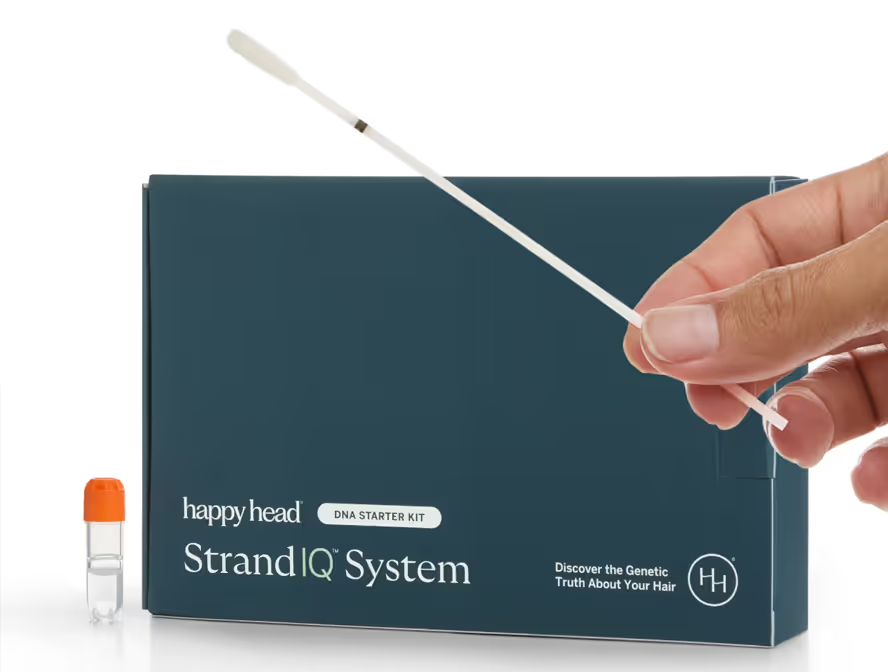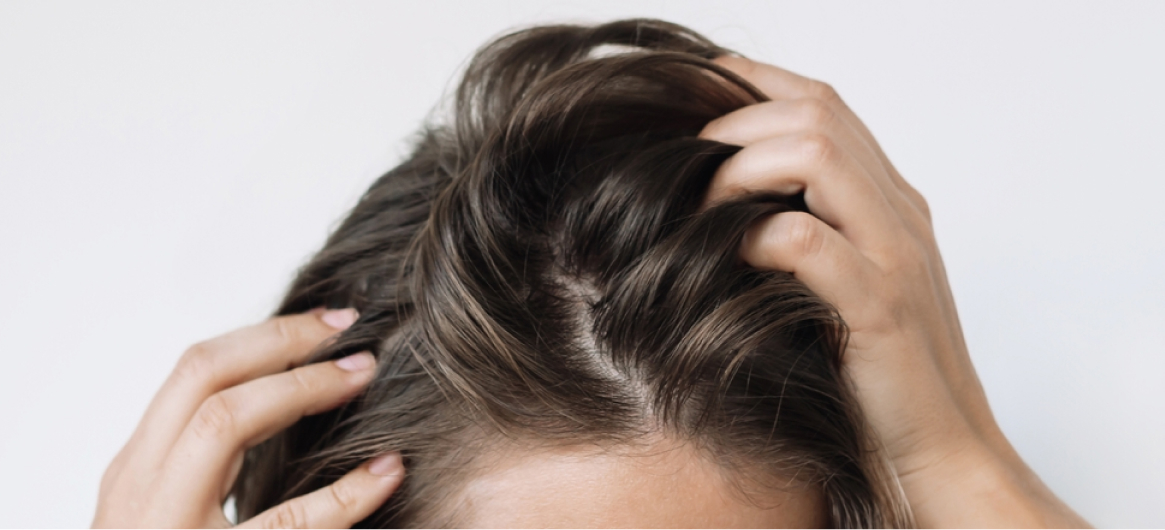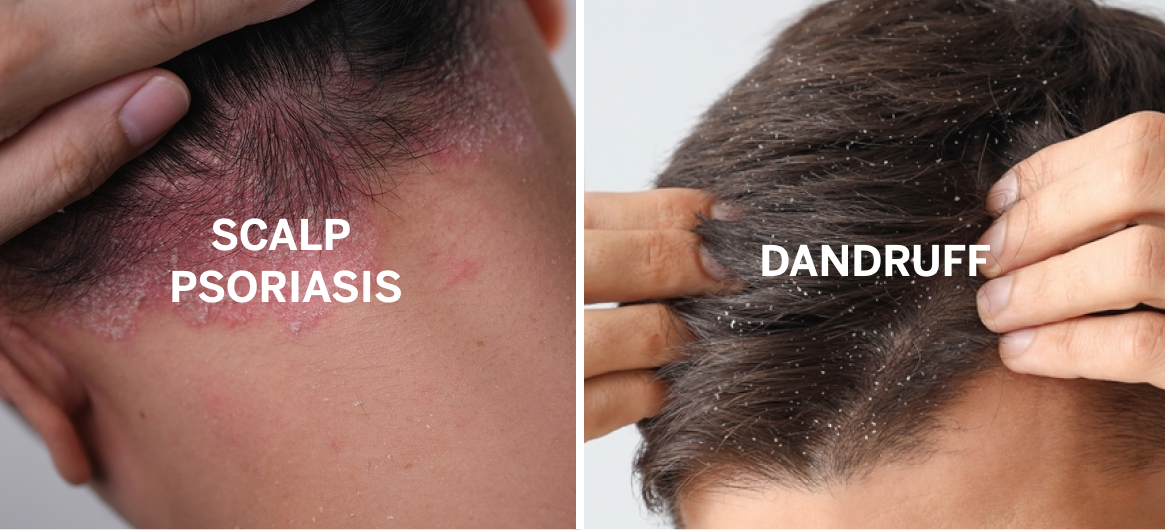Using Redensyl for hair growth may be a promising alternative to traditional treatments such as minoxidil and finasteride, offering a non-hormonal, plant-based approach to managing hair thinning.
Designed to target hair follicle stem cells and reactivate dormant follicles, Redensyl is gaining attention for its effectiveness and minimal side effects.
Whether you're just beginning to notice increased shedding or looking to enhance existing hair density, this innovative compound may be worth considering.
In this comprehensive guide, we’ll explore how Redensyl works, who it may benefit, and what to expect from products with Redensyl.
What Is Redensyl?
Redensyl is a cosmetic active ingredient formulated to support hair regrowth by targeting hair follicle stem cells and dermal papilla fibroblasts. It is often promoted as a plant-based alternative to minoxidil and is found in many over-the-counter hair serums.
Redensyl contains patented molecules—primarily DHQG (dihydroquercetin-glucoside) and EGCG2 (epigallocatechin gallate-glucoside)—which stimulate the anagen (growth) phase of the hair cycle and reduce entry into the telogen (shedding) phase.
Unlike minoxidil, which works by vasodilation and is approved by the FDA in topical form, Redensyl acts on a cellular level without altering blood flow or hormone levels.
It is non-hormonal and non-irritating for most users and is marketed as safe for both men and women. While it’s not a pharmaceutical drug, it is thought to significantly increase hair density and reduce hair loss when used consistently.
Can Redensyl Regrow Hair? How It Works
Redensyl may help regrow hair by reactivating dormant follicles and stimulating cellular activity essential for hair production.
It works by targeting the hair follicle’s outer root sheath stem cells and dermal papilla fibroblasts—two key components in initiating and sustaining the anagen (growth) phase.
By enhancing cell proliferation and reducing apoptosis (cell death), Redensyl helps restore hair density in thinning areas. It also reduces inflammation and oxidative stress around the follicles, which are common triggers of premature hair shedding.
Redensyl does not alter hormone levels like finasteride or increase scalp circulation like minoxidil.
Instead, it supports the follicle’s natural regenerative processes, making it particularly appealing for those with early-stage hair loss or sensitivity to drug-based treatments.
Key Ingredients in Redensyl
Redensyl is composed of several synergistic ingredients that work together to stimulate hair regrowth.
The primary actives include DHQG (dihydroquercetin-glucoside), which is derived from larch wood and helps energize hair follicle stem cells, and EGCG2 (epigallocatechin gallate-glucoside), a stabilized green tea derivative known for its anti-inflammatory properties and its ability to promote cell proliferation.
Other supporting ingredients include glycine and zinc, both of which are essential for protein synthesis and healthy hair structure. Glycerin also helps to maintain hydration and improve product penetration.
The formulation is water-based, non-greasy, and free of parabens and silicones, so it is suitable for sensitive scalps and daily use.
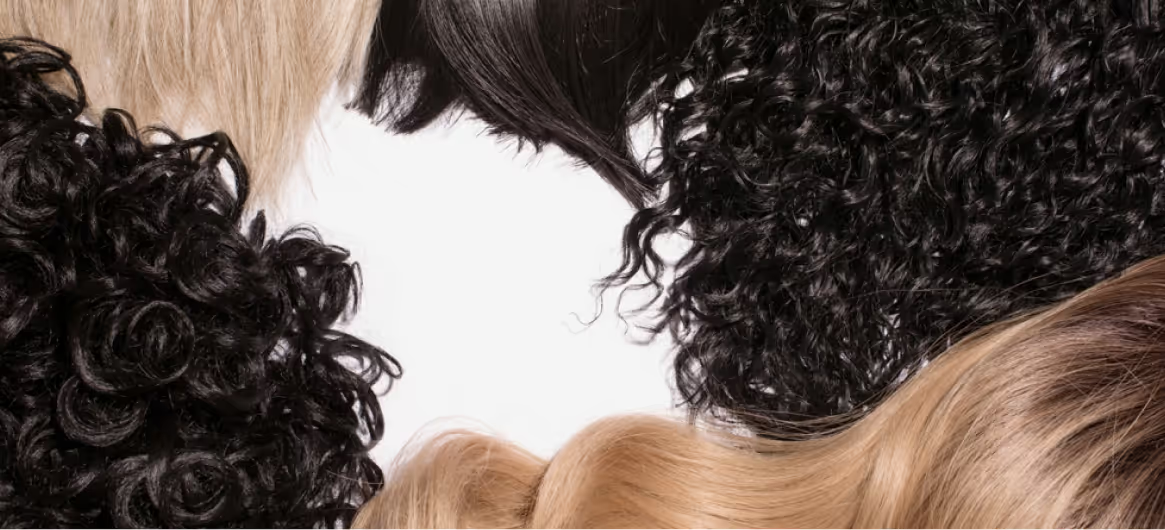
Redensyl for Different Hair Types
Redensyl is suitable for all hair types, including straight, wavy, curly, and coily textures. Its lightweight, non-greasy formulation absorbs easily into the scalp without altering hair texture or weighing it down.
Because it targets the follicle—not the hair shaft—it can benefit individuals regardless of hair porosity, density, or curl pattern. For those with tightly coiled or textured hair, applying Redensyl in parted sections can help ensure even distribution to the scalp.
Is Redensyl Effective for Both Men and Women?
Yes—Redensyl is effective for both men and women experiencing hair thinning or early-stage hair loss. Unlike finasteride, which is not approved for female use, Redensyl is hormone-free and targets follicle stem cells directly.
It is commonly used for androgenetic alopecia, telogen effluvium, and general hair thinning in both men and women, making it a versatile, unisex option.
Potential Side Effects of Redensyl for Hair Growth
Redensyl is generally well tolerated, but mild side effects can occur, especially in people with sensitive skin or allergies.
Reported side effects include scalp redness, itching, dryness, and irritation, all of which are often related to the serum’s base formulation rather than Redensyl itself.
These symptoms are typically temporary and resolve when application frequency is reduced or when a milder formulation is used.
To minimize risk, always perform a patch test before full use. Avoid applying Redensyl to broken or inflamed skin, and discontinue use if symptoms persist. Consulting a dermatologist is recommended if adverse reactions develop or worsen.
Who Should Avoid Redensyl?
Redensyl may not be suitable for individuals with a known allergy to any of its components, including botanical extracts such as DHQG or EGCG2. Those with active scalp conditions such as eczema, psoriasis, or open wounds should also avoid use until the skin has healed.
Pregnant or breastfeeding women should consult their doctor before starting Redensyl, as safety data in these populations is limited.
Clinical Studies on Redensyl for Hair Growth
Early evaluation of the effectiveness of Redensyl on hair growth and density is promising, but because the studies typically evaluate a solution containing Redensyl and other hair growth treatments, it’s hard to determine which ingredient led to improvements in hair growth.
One 2025 study evaluated the effectiveness of a product containing Redensyl, rosemary oil, rice water extract, chia seed extract, and several other ingredients in reducing gray hairs and promoting growth.
The results showed that the treatment not only led to a significant reduction in gray hairs but also an improvement in hair growth.
Hair growth rate was enhanced by 46.71%, hair length improved by 35.40%, the ratio of anagen to telogen hairs improved by 48.26%, hair density improved by 37.92%, hair thickness improved by 80.85%, and a reduction in hair fall was observed by 64.89% of participants.
As impressive as those results are, it’s impossible to say whether Redensyl, rosemary oil, or one of the other ingredients was responsible for the improvements.
An older study published in the Journal of Cosmetology & Trichology focused on the effectiveness of Redensyl compared to minoxidil in men with androgenetic alopecia.
After treatment, researchers found that of the 106 men who completed the study, the group treated with Redensyl showed significantly better hair growth recovery (64.7%) than the group treated with minoxidil (25.5%).
However, Redensyl was not tested alone. The Redensyl solution also contained Capixyl and Procapil, so the results do not definitively prove that Redensyl alone is effective. Further research focusing solely on Redensyl is needed.
How To Use Redensyl for Hair Growth
Redensyl is typically applied topically as part of a daily hair care routine. It’s most often found in leave-in serums designed to be massaged directly onto the scalp, ideally focusing on areas of thinning.
Clean, dry hair and scalp optimize absorption, and use should be consistent over several months for best results.
While some products combine Redensyl with other actives such as Procapil or Capixil, the application process is generally the same: apply directly to the scalp, not the hair shafts, and allow the product to air dry. Do not rinse.
Most formulations recommend using 1 to 2 mL per day. It's safe to combine with other treatments, but allow at least 15 minutes between applications to avoid dilution or irritation.
Application Tips for Best Results
For optimal outcomes, consistency and correct technique are key. Here are some dermatologist-backed tips:
- Apply to a clean, dry scalp—ideally after showering or before bedtime.
- Part hair in sections to reach the scalp directly.
- Use the recommended dosage—usually 1–2 mL per application.
- Massage gently for 30–60 seconds to improve absorption and blood flow.
- Avoid rinsing or blow-drying the area immediately after application.
- Be consistent—apply once daily at the same time to maintain a routine.
- Combine with scalp care (such as exfoliation) once or twice a week to remove buildup.
- Store in a cool, dry place, and avoid contamination of the dropper or nozzle.
How Long Does It Take to See Improvement?
Hair growth occurs in cycles, so visible improvement with Redensyl takes time. Most users notice reduced shedding or slight thickening after 8 to 12 weeks of treatment.
However, more significant changes, such as increased hair density or regrowth in thinning areas, typically require consistent use for at least 3 to 6 months.
Individual results vary based on age, hair loss severity, and whether the product is used as a standalone treatment or part of a broader regimen. Continued use is often needed to maintain results, as discontinuation may gradually reverse progress.
Comparing Redensyl to Other Hair Growth Treatments
With so many hair regrowth options on the market, it's natural to wonder how Redensyl compares. While traditional treatments such as minoxidil and finasteride have been available for decades, Redensyl offers a newer, non-drug alternative with a different mechanism of action.
Understanding how each works can help individuals, especially those seeking gentler or hormone-free solutions, make informed decisions tailored to their needs.
Redensyl vs. Minoxidil: Which Works Better?
Minoxidil is a vasodilator that improves blood flow to the scalp and prolongs the anagen phase, making it effective for stimulating hair growth. However, it can cause irritation, dryness, and increased shedding during initial use.
Redensyl, by contrast, acts on the follicle’s stem cells and dermal papilla without altering blood flow. It is non-hormonal, typically well tolerated, and easier to incorporate into sensitive skin routines.
While minoxidil may deliver faster or more dramatic results for some, Redensyl offers a gentler alternative with fewer side effects and is often used in combination with other topical treatments.
How Redensyl Compares to Finasteride and Other Options
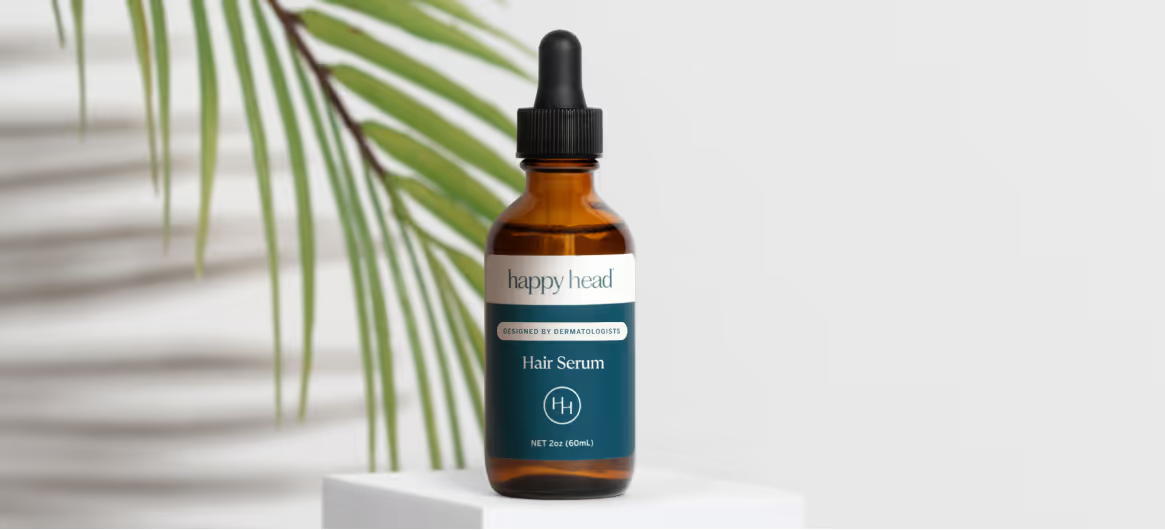
Finasteride works by inhibiting the enzyme that converts testosterone to DHT, a hormone linked to hair follicle miniaturization. While effective, it’s only approved for men and may cause systemic side effects, including sexual dysfunction.
Redensyl avoids hormonal pathways entirely, making it suitable for both men and women.
Other options, such as Procapil, Capixil, and natural oils, may support scalp health or block DHT topically, but Redensyl stands out by directly stimulating follicular activity.
It’s a strong choice for those looking for a non-hormonal, science-backed solution to thinning hair, especially in the early stages of hair loss.
Products Containing Redensyl, Procapil, and Capixil
Combining Redensyl with Procapil and Capixyl offers a multi-targeted approach to hair care by stimulating follicle stem cells, strengthening root anchoring, and inhibiting DHT-related thinning. This blend supports hair growth at every stage—regrowth, retention, and scalp comfort.
Happy Head’s Hair Serum incorporates all three actives along with soothing botanicals, including saw palmetto, seabuckthorn, and rosemary oil.
The physician-formulated, lightweight, non-greasy serum is 100% drug-free, designed to nourish follicles while reducing irritation and invigorating the scalp.
Additional Ways To Improve Hair Density Naturally
While topical treatments like Redensyl play a key role in stimulating hair regrowth, supporting hair health from the inside out can significantly enhance your results.
Natural strategies—including lifestyle improvements, targeted nutrition, and thoughtful scalp care—can strengthen hair follicles, reduce shedding, and create optimal conditions for long-term growth.
These approaches work synergistically with topical products, especially in the early stages of hair thinning.
Healthy Habits and Lifestyle Choices
Chronic stress, poor sleep, smoking, and lack of exercise all negatively impact hair health by increasing cortisol levels, reducing circulation, and weakening immune function.
Incorporating regular physical activity improves blood flow to the scalp, while prioritizing restorative sleep supports cellular repair. Mind-body practices such as yoga or meditation can help regulate hormones that influence hair shedding.
Avoiding smoking and excessive alcohol consumption is also essential, as both impair nutrient delivery to hair follicles. Adopting a hair-friendly lifestyle not only supports hair density but can improve overall well-being and slow the progression of age-related thinning.
Diet and Supplements
Hair follicles are metabolically active and require consistent nutritional support. A balanced diet rich in protein, iron, zinc, biotin, vitamin D, and omega-3 fatty acids can significantly impact hair thickness and strength.
Lean meats, eggs, legumes, leafy greens, and nuts should be dietary staples. In cases of dietary gaps or deficiencies, supplements may be helpful, but they should be guided by bloodwork and a healthcare provider’s recommendations.
Popular options include biotin, collagen peptides, vitamin D3, iron (if deficient), and saw palmetto. It’s important to avoid excessive supplementation, as imbalances, particularly with vitamin A or selenium, can contribute to hair loss.
Scalp Care Tips
A healthy scalp is the foundation for strong, resilient hair. Routine scalp care removes buildup, promotes circulation, and reduces inflammation. Gentle exfoliation once or twice a week with a scalp scrub or soft brush can clear dead skin and product residue that may clog follicles.
Daily cleansing with a mild, sulfate-free shampoo helps maintain balance without stripping essential oils. Avoid harsh chemicals, tight hairstyles, and excessive heat styling, all of which can damage the scalp and weaken follicles.
Incorporating nourishing oils like rosemary, tea tree, or peppermint—known for their anti-inflammatory and antimicrobial properties—can further improve scalp health and support hair density.
What Happens if You Stop Using Redensyl?
If you stop using Redensyl, any gains in hair density or reduced shedding may gradually reverse over time. This is because Redensyl supports active follicle function but does not permanently alter the underlying cause of hair loss.
Without ongoing stimulation, follicles may re-enter the resting (telogen) phase, leading to resumed thinning or shedding.
To maintain results, long-term consistency is typically necessary, especially for individuals with chronic or progressive hair loss conditions such as androgenetic alopecia.
Redensyl for Hair Growth: Is It Worth Trying?
When it comes to treating hair thinning, there’s no one-size-fits-all solution, but Redensyl offers a thoughtful, science-backed option for those seeking a gentler alternative to drug-based treatments.
Its unique mechanism targets the root causes of hair loss at the cellular level without interfering with hormones, making it a suitable choice for both men and women.
While results take time and consistency, many users find that Redensyl enhances hair density, reduces shedding, and improves scalp health with minimal risk of side effects.
For anyone navigating early-stage hair loss or seeking a supportive boost to their hair care routine, exploring Redensyl for hair growth may be worthwhile.
Talk to a board-certified dermatologist to discuss your goals and find the solution that is best for you.
Frequently Asked Questions
Does Redensyl really regrow hair?
Redensyl may help regrow hair in individuals experiencing thinning or early-stage hair loss by stimulating hair follicle stem cells. Many users report improved hair density and reduced shedding, but results vary, and it's not a guaranteed solution for baldness.
What are the side effects of Redensyl?
Redensyl is generally well tolerated. Some users report mild scalp irritation, itching, or redness, particularly with overuse or sensitive skin. Side effects are uncommon and usually resolve with reduced application or discontinuation of the product.
How long does it take for Redensyl to work?
Initial improvements, such as reduced shedding or slight thickening, may appear after 8 to 12 weeks. Noticeable increases in hair density typically require consistent use for at least 3 to 6 months, as hair growth cycles take time to respond to treatment.
Which is better, Redensyl or minoxidil?
Minoxidil is FDA-approved in the topical form and has more robust clinical data for hair regrowth. Redensyl is a newer, plant-based alternative with promising results and fewer side effects. Effectiveness varies by individual, and some may benefit from using both together.







